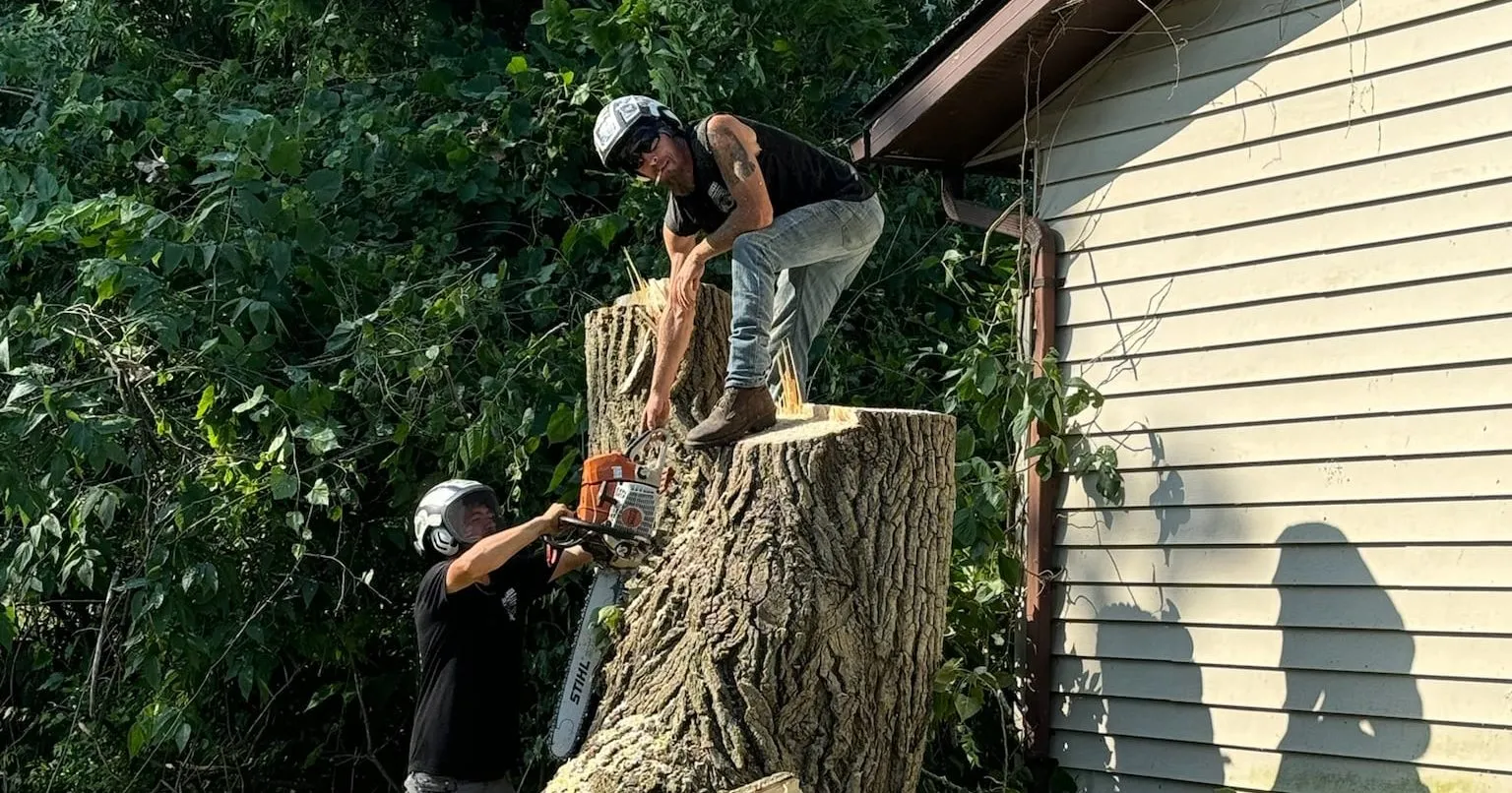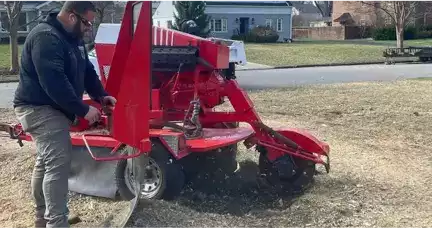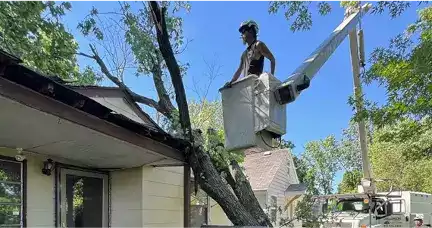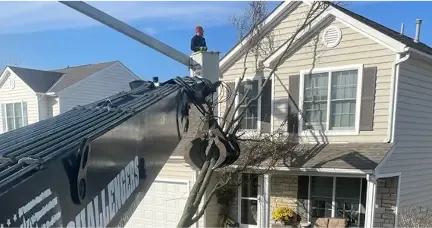Not every tree is meant to stay rooted forever. Some become dangerous liabilities, even if they still look healthy at a glance. One strong wind or a hidden internal rot can turn that old oak into a disaster waiting to happen.
If you’ve ever looked at a tree in your yard and thought, “Is that safe?” you’re not alone. Homeowners across Columbus and Grove City face this same worry every storm season.
We’ll walk you through the five biggest warning signs your tree might need to come down before it causes serious damage.
What You’ll Learn in This Blog:
- What “danger signs” to look for in trees
- How to spot hidden damage before it becomes urgent
- When to remove a tree vs. when to trim it
- Real-life risks of ignoring a problem
- What to do if you’re unsure
Why Tree Removal Matters for Homeowners
Falling trees can do more than leave a mess. They cause injuries, destroy fences, damage homes, and trigger major insurance problems. We’ve seen it happen and most of it could’ve been prevented.
Here’s why acting early helps:
- Safety comes first: Unstable trees fall fast, especially during the storms we see in Ohio.
- It saves money: Removing a problem tree before it collapses costs less than fixing the damage afterward.
- You stay covered: If your tree crashes into a neighbor’s home or car, you could end up paying for it.
- You’ll stress less: A safe yard means fewer surprises and more peace of mind.
We’ve seen homeowners in Grove City ignore cracks in the trunk, only to come home one day and find the tree had split down the middle. Don’t wait for that wake-up call.
5 Warning Signs It’s Time to Remove Your Tree
1. It’s Leaning More Than It Should
Not all leaning trees are doomed, but if the lean is new, increasing, or sudden, it could mean root damage or instability. Trees that lean more than 15 degrees often need to be removed.
2. Visible Rot or Fungus at the Base
Mushrooms, soft wood, or visible decay at the trunk base usually means internal rot. That’s a red flag for structural failure.
3. Large Dead Branches at the Top (or Whole Sections)
Deadwood isn’t just unsightly, it’s dangerous. Large dead branches can fall unpredictably, especially in high winds.
4. Cracks in the Trunk or Major Splits
Splits and cracks weaken the tree’s ability to support itself. If they run deep into the trunk or limbs, removal is often the safest route.
5. The Roots Are Lifting or Damaged
Roots are the foundation. If you see soil heaving, exposed roots, or signs of uprooting, that’s a serious stability issue.
What to Do Instead of Guessing: Call a certified arborist for an assessment. They’ll tell you if your tree can be saved or if removal is the safest move.
Step-by-Step: What to Do If You Notice These Signs
Step 1: Take Photos
Document the damage. This helps if you need insurance or expert consultation.
Step 2: Don’t Try to Cut It Yourself
Tree removal is risky and requires specialized gear. DIY removal can result in injury or property damage.
Step 3: Call a Trusted Local Arborist
Choose someone with insurance, credentials, and experience in your area.
Step 4: Get a Written Quote & Plan
You should know exactly what the process includes: cleanup, stump grinding, timelines, etc.
Step 5: Schedule the Removal Before Storms Hit
Don’t wait until it’s urgent. Preemptive removal protects your home and family.
Pro Tip: In Columbus, early fall is often the safest time for removal, before ice storms arrive.
Quick Checklist:
- Does the tree lean more than 15 degrees?
- Mushrooms or rot at the trunk base?
- Large dead limbs overhead?
- Cracks in the trunk?
- Roots pulling up sidewalk or soil?
If yes to any, it’s time to call.
When You Can DIY (And When Not To)
You might be okay on your own if:
- You’re just pruning small branches (under 2 inches thick)
- The tree is small, healthy, and accessible
- There are no power lines or structures nearby
Call a pro if:
- The tree is large, dead, or near a structure
- It’s close to utility lines
- You’re not sure if it’s diseased or rotted
Tree removal in Columbus or Grove City often requires permits and safety clearance, something pros are trained to handle.
Risk Factors That Change the Game
| Factor | Why It Matters |
|---|---|
| Size of Tree | Bigger trees mean bigger risk |
| Proximity to Structures | Increases damage potential |
| Disease or Decay Level | Hidden rot can cause collapse |
| Weather Forecast | Storms accelerate failure risk |
| Root System Health | Uprooted trees can’t be saved |
Things to Consider Before Removing a Tree:
- Will it affect soil erosion?
- Does it provide necessary shade?
- Is wildlife using it?
Did You Know?
Columbus has a high density of mature maples, many over 50 years old. These trees are beautiful but prone to root damage and hollow trunks. In Grove City, urban development has altered soil conditions, making older trees more vulnerable to storm damage.
Power lines in older neighborhoods also increase the need for regular inspection. Local tree services often find hidden decay after just one windstorm.
Common Misunderstandings Homeowners Have
“It still has green leaves, so it’s fine.”
Even trees with healthy leaves can be structurally unsound inside.
“That crack’s been there for years.”
Cracks can grow and deepen over time, especially with freeze-thaw cycles.
“If it hasn’t fallen yet, it probably won’t.”
The next storm might be all it takes.
“Tree work is too expensive.”
Putting it off often costs more in emergency damage and liability.
“I’ll just trim it and see.”
Sometimes trimming delays the inevitable and wastes money.
Expert Tip Box: How Arborists Check Tree Health
- Use resistograph drills to test trunk strength
- Inspect leaf color and branch flexibility
- Examine soil grade and root exposure
- Use binoculars to check upper canopy rot
You don’t need to know all the science that’s what the experts are for.
More FAQs Homeowners Are Asking
What’s the safest time of year for tree removal?
Late summer to early fall is safest in Ohio before the ice and wind pick up.
Can I plant a new tree after removal?
Yes, but it’s best to grind the stump and wait at least 3–6 months before replanting in the same spot.
What equipment do professionals use?
Bucket trucks, climbing harnesses, cranes (for tight spaces), chainsaws, and ground protection mats.
What happens if I delay removal?
The tree may collapse, damage property, block driveways, or fall onto your neighbor’s yard.
Are arborists certified?
Look for certified arborists who meet national standards for tree safety and health assessment.
Do companies clean up afterward?
Reputable ones do. Always ask if cleanup and stump grinding are included in the quote.
What to Do Next
Still unsure if your tree’s a problem? We’re here to help, no pressure.
Talk to a certified arborist in Columbus or Grove City and get honest, expert advice.
Contact Challengers Tree Service for a free quote or tree health check today. You’ll be glad you didn’t wait.





